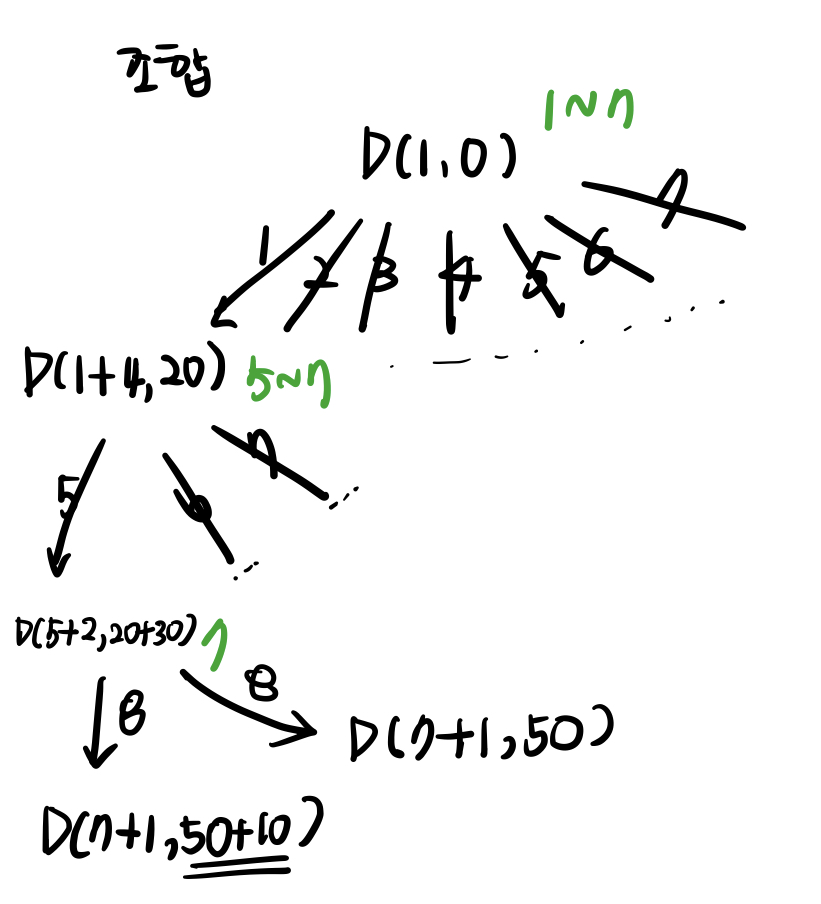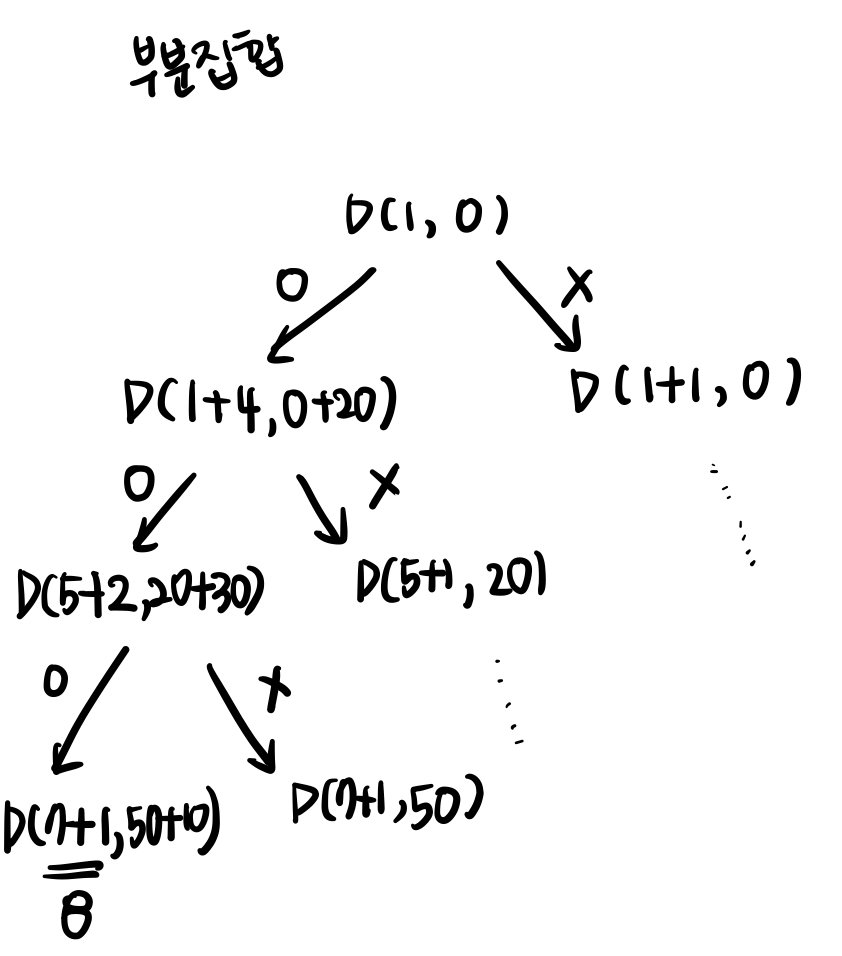부분집합과 조합의 차이가 약간 헷갈리지만.. 아래 코드를 보면 둘은 큰 차이가 없다. 조합이 for i in range(s, n+1): 이렇게 가지를 뻗어나가는 코드가 있다는 것?! 정도의 차이이다.
그래프를 실제 그려보니 조합과 부분집합이 조금은 구분이 된다.
방법1) 조합

def DFS(s, money):
global max
if s > (n+1):
return
if s == (n+1):
if money > max:
max = money
for i in range(s, n+1):
if i+graph[i][0] <= (n+1):
DFS(i+graph[i][0], money+graph[i][1])
DFS(i+1, money)
n = int(input())
graph = []
for _ in range(n):
a, b = map(int, input().split())
graph.append([a, b])
graph.insert(0, [0, 0])
max = -2147000000
DFS(1, 0)
print(max)방법2) 부분집합

def DFS(L, sum):
global max
if L == (n+1):
if sum > max:
max = sum
else:
if L+T[L] <= (n+1):
DFS(L+T[L], sum+P[L]) # 상담을 했을 때
DFS(L+1, sum) # 1씩 증가하다보면 n+1로 가게 됨
n = int(input())
T = list()
P = list()
for _ in range(n):
a, b = map(int, input().split())
T.append(a)
P.append(b)
max = -2147000000
T.insert(0, 0) # 인덱스 번호를 1일부터 맞추기 위해 한 칸씩 미루기
P.insert(0, 0) # 인덱스 번호를 1일부터 맞추기 위해 한 칸씩 미루기
DFS(1, 0) # 날짜, 돈 합
print(max)
